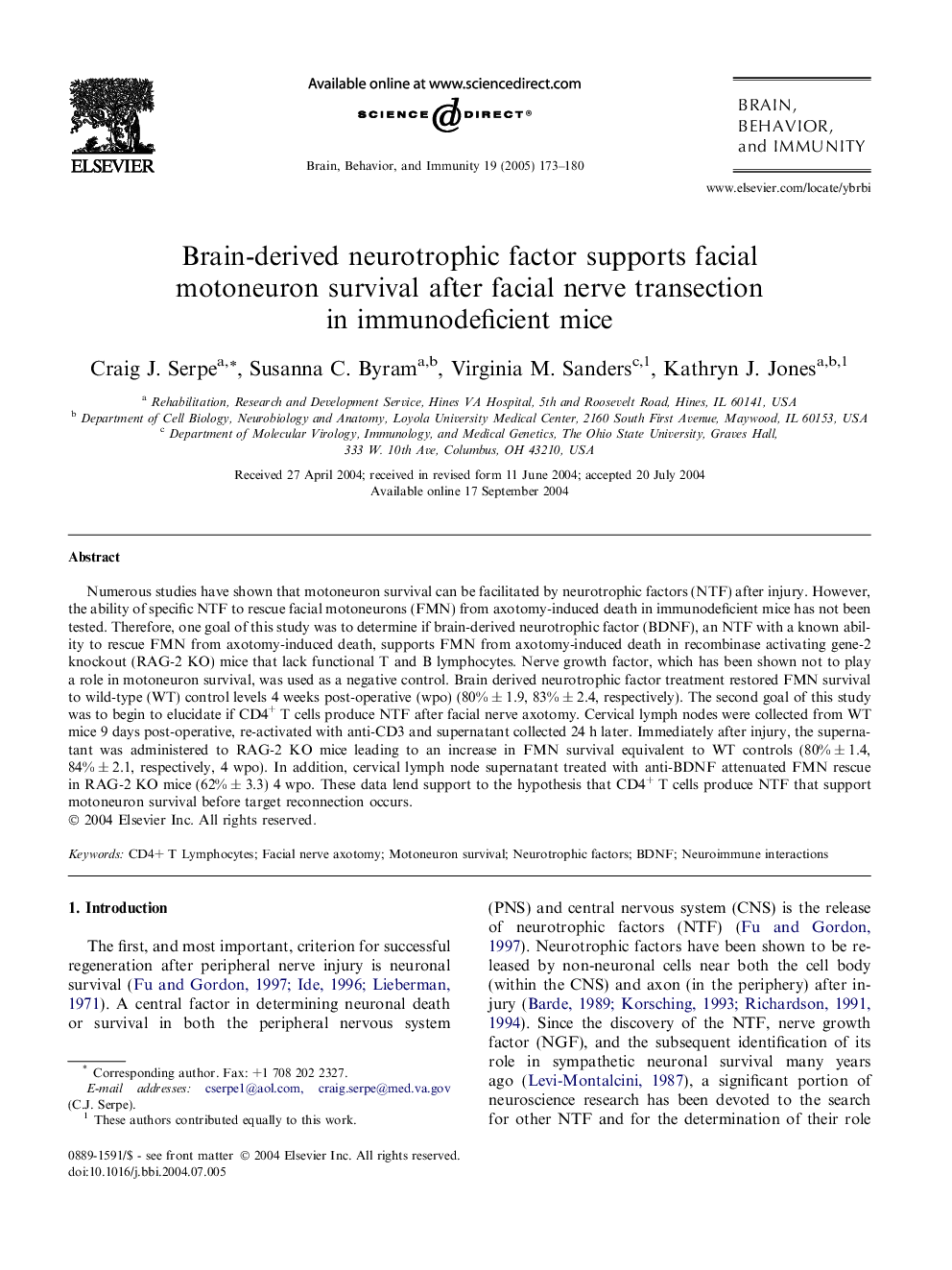| Article ID | Journal | Published Year | Pages | File Type |
|---|---|---|---|---|
| 10455276 | Brain, Behavior, and Immunity | 2005 | 8 Pages |
Abstract
Numerous studies have shown that motoneuron survival can be facilitated by neurotrophic factors (NTF) after injury. However, the ability of specific NTF to rescue facial motoneurons (FMN) from axotomy-induced death in immunodeficient mice has not been tested. Therefore, one goal of this study was to determine if brain-derived neurotrophic factor (BDNF), an NTF with a known ability to rescue FMN from axotomy-induced death, supports FMN from axotomy-induced death in recombinase activating gene-2 knockout (RAG-2 KO) mice that lack functional T and B lymphocytes. Nerve growth factor, which has been shown not to play a role in motoneuron survival, was used as a negative control. Brain derived neurotrophic factor treatment restored FMN survival to wild-type (WT) control levels 4 weeks post-operative (wpo) (80% ± 1.9, 83% ± 2.4, respectively). The second goal of this study was to begin to elucidate if CD4+ T cells produce NTF after facial nerve axotomy. Cervical lymph nodes were collected from WT mice 9 days post-operative, re-activated with anti-CD3 and supernatant collected 24 h later. Immediately after injury, the supernatant was administered to RAG-2 KO mice leading to an increase in FMN survival equivalent to WT controls (80% ± 1.4, 84% ± 2.1, respectively, 4 wpo). In addition, cervical lymph node supernatant treated with anti-BDNF attenuated FMN rescue in RAG-2 KO mice (62% ± 3.3) 4 wpo. These data lend support to the hypothesis that CD4+ T cells produce NTF that support motoneuron survival before target reconnection occurs.
Keywords
Related Topics
Life Sciences
Immunology and Microbiology
Immunology
Authors
Craig J. Serpe, Susanna C. Byram, Virginia M. Sanders, Kathryn J. Jones,
